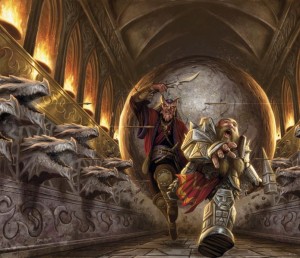Mr. Pink: Hey, why am I Mr. Pink?
Joe: Because…
Mr. Pink: Why can’t we pick our own colors?
Joe: No way, no way. Tried it once, doesn’t work. You got four guys all fighting over who’s gonna be Mr. Black, but they don’t know each other, so nobody wants to back down. No way. I pick. You’re Mr. Pink. Be thankful you’re not Mr. Yellow.
Mr. Pink: Mr. Pink sounds kinda wimpy. How ’bout if I’m Mr. Purple? That sounds good to me. I’ll be Mr. Purple.
Joe: You’re not Mr. Purple. Some guy on some other job is Mr. Purple. Your Mr. PINK.
Mr. White: Who cares what your name is?
Mr. Pink: Yeah, that’s easy for your to say, you’re Mr. White. You have a cool-sounding name. Alright look, if it’s no big deal to be Mr. Pink, you wanna trade?
Joe:Hey! NOBODY’S trading with ANYBODY. This ain’t a city council meeting, you know. Now listen up, Mr. Pink. There’s two ways you can go on this job: my way or the highway. Now what’s it gonna be, Mr. Pink?
Mr. Pink: Alright, I’m Mr. Pink. Let’s move on.
Joe:I’ll move on when I feel like it… All you guys got the message?… I’m so mad, hollering at you guys I can hardly talk. Pssh. Let’s go to work.
– Reservoir Dogs
Ever have one of those nights? Two of your players keep butting heads, constantly arguing about what the party should do. Perhaps one of your players is trying to play someone else’s character, constantly telling them what to do. The player thinks they are being helpful, but really the player has become The Gaming Jerk. You can see the writing on the wall and things aren’t going to end well. What do you do?
Maybe you have another problem. A player constantly disagrees with your rulings. Sometimes they are right, sometimes wrong but you’re trying to keep the game moving. You’re following the Eight Rules That Will Make You A Better DM, but you aren’t having any luck with this particular player. It seems they are taking more delight in slowing down and ruining the gaming experience for everyone at the table than just moving on. How do you handle them?




